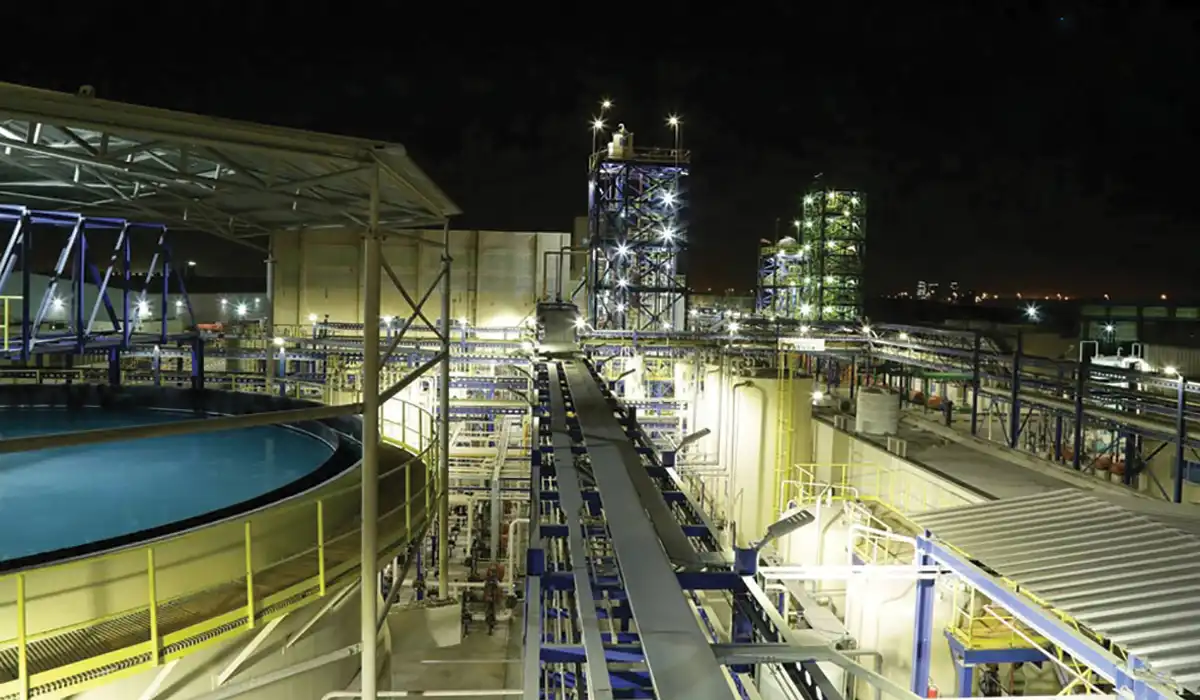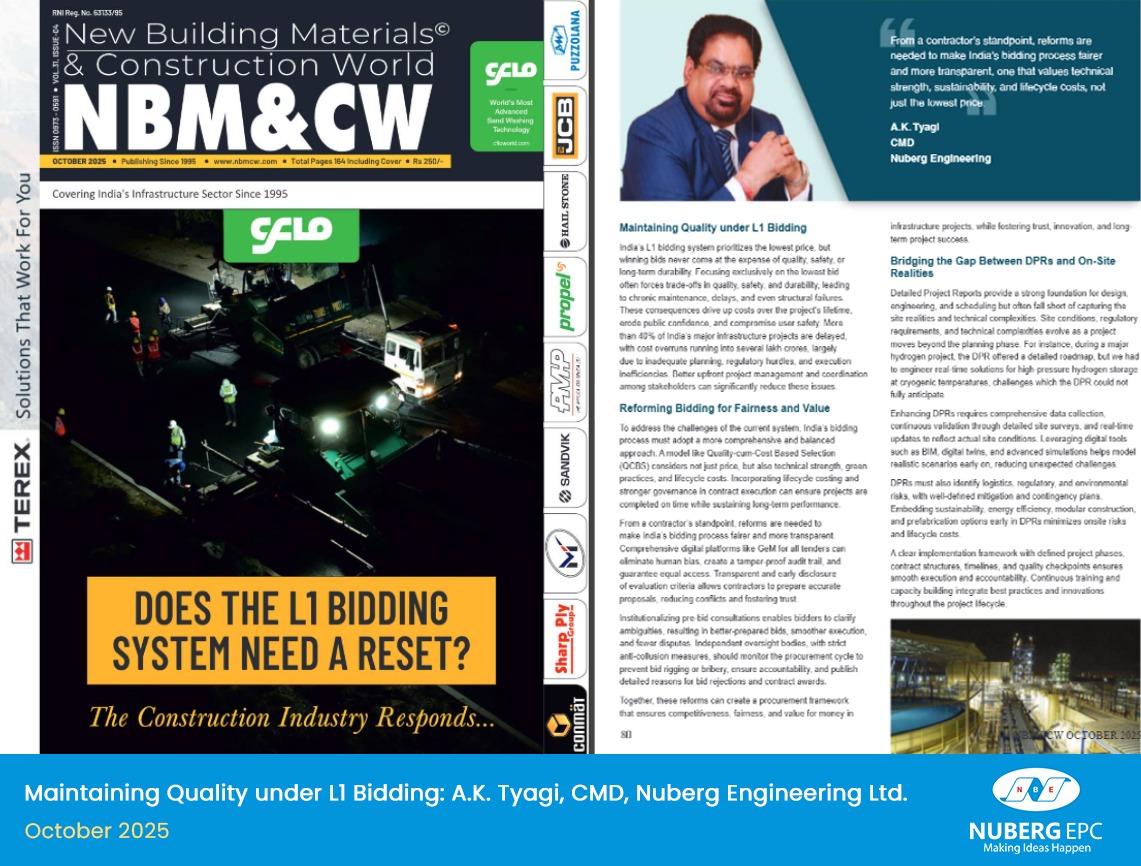Maintaining Quality Under L1 Bidding
"From a contractor's standpoint, reforms are needed to make India's bidding process fairer and more transparent, one that values technical strength, sustainability, and lifecycle costs,
not just the lowest price."
AK Tyagi, CMD, Nuberg Group of Industries
NBM&CW, October 2025
India's L1 bidding system prioritizes the lowest price, but winning bids never come at the expense of quality, safety, or long-term durability. Focusing exclusively on the lowest bid often forces trade-offs in quality, safety, and durability, leading to chronic maintenance, delays, and even structural failures. These consequences drive up costs over the project's lifetime, erode public confidence, and compromise user safety. More than 40% of India's major infrastructure projects are delayed, with cost overruns running into several lakh crores, largely due to inadequate planning, regulatory hurdles, and execution inefficiencies. Better upfront project management and coordination among stakeholders can significantly reduce these issues.
Reforming Bidding for Fairness and Value
To address the challenges of the current system, India's bidding process must adopta more comprehensive and balanced approach. A model like Quality-cum-Cost Based Selection (QCBS) considers not just price, but also technical strength, green practices, and lifecycle costs. Incorporating lifecycle costing and stronger governance in contract execution can ensure projects are completed on time while sustaining long-term performance.
From a contractor's standpoint, reforms are needed to make India's bidding process fairer and more transparent. Comprehensive digital platforms like GeM for all tenders can eliminate human bias, create a tamper-proof audit trail, and guarantee equal access. Transparent and early disclosure of evaluation criteria allows contractors to prepare accurate proposals, reducing conflicts and fostering trust.
Institutionalizing pre-bid consultations enables bidders to clarify ambiguities, resulting in better-prepared bids, smoother execution, and fewer disputes. Independent oversight bodies, with strict anti-collusion measures, should monitor the procurement cycle to prevent bid rigging or bribery, ensure accountability, and publish detailed reasons for bid rejections and contract awards.
Together, these reforms can create a procurement framework that ensures competitiveness, fairness, and value for money in infrastructure projects, while fostering trust, innovation, and longterm project success.
Bridging the Gap Between DPRs and On-Site Realities

Detailed Project Reports provide a strong foundation for design, engineering, and scheduling but often fall short of capturing the site realities and technical complexities. Site conditions, regulatory requirements, and technical complexities evolve as a project moves beyond the planning phase. For instance, during a major hydrogen project, the DPR offered adetailed roadmap, but we had to engineer real-time solutions for high-pressure hydrogen storage at cryogenic temperatures, challenges which the DPR could not fully anticipate.
Enhancing DPRs requires comprehensive data collection, continuous validation through detailed site surveys, and real-time updates to reflect actual site conditions. Leveraging digital tools such as BIM, digital twins, and advanced simulations helps model realistic scenarios early on, reducing unexpected challenges.
DPRs must also identify logistics, regulatory, and environmental risks, with well-defined mitigation and contingency plans. Embedding sustainability, energy efficiency, modular construction, and prefabrication options early in DPRs minimizes onsite risks and lifecycle costs.
A clear implementation framework with defined project phases, contract structures, timelines, and quality checkpoints ensures smooth execution and accountability. Continuous training and capacity building integrate best practices and innovations throughout the project lifecycle.
© This article was first published in NBM&CW, October 2025.
Download PDF


